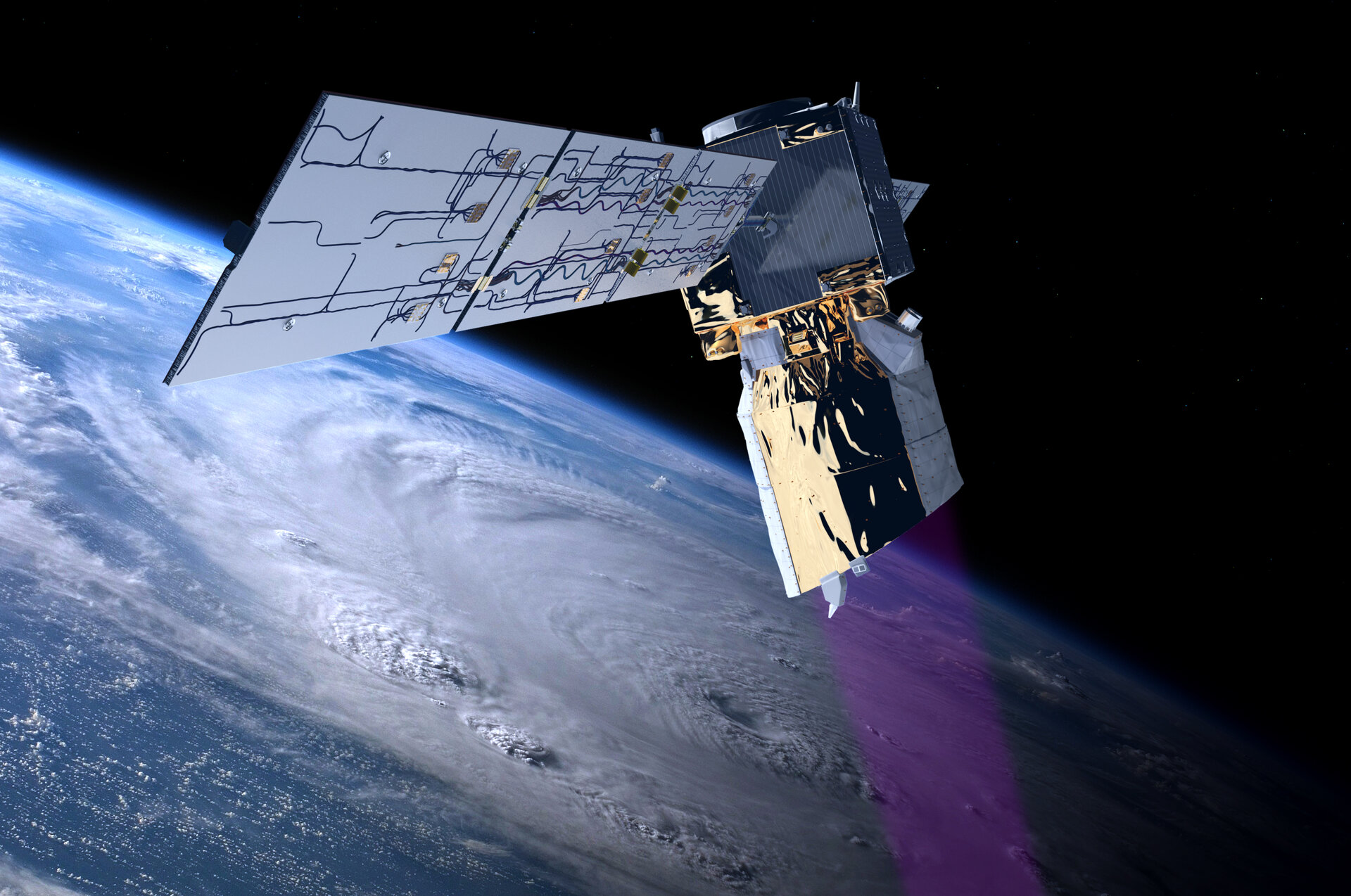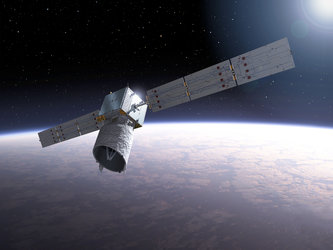Lasers in space
Being such a dynamic and relatively invisible aspect of Earth’s environment, it is extremely difficult to make global measurements of wind. The only way to achieve this is to probe the atmosphere from space using a highly sophisticated Doppler wind lidar.
A lidar uses the phenomenon of light scattering and the Doppler Effect to acquire data on wind. A lidar works by emitting a short, but powerful, pulses of light from a laser through the atmosphere and then collects light that is backscattered from particles of gas and dust and droplets of water in the atmosphere.
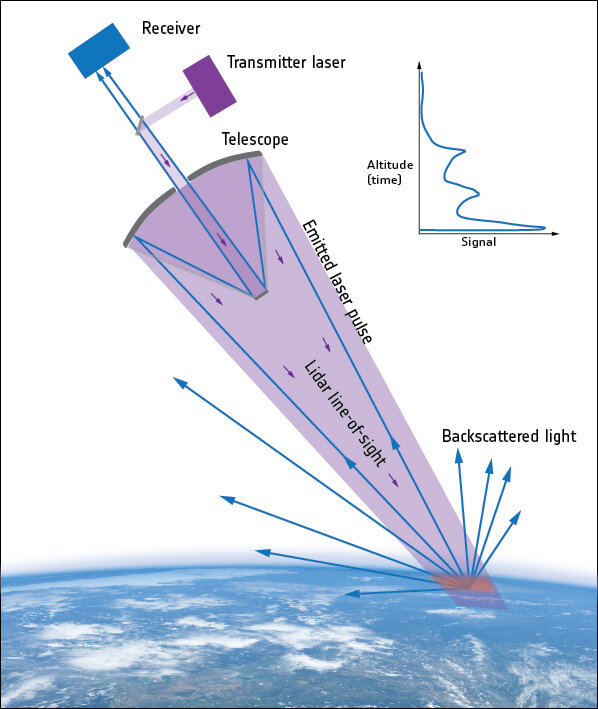
The time between sending the light pulse and receiving the signal back determines the distance to the ‘scatterers’ and, thus, the altitude above Earth.
As the scattering particles are moving in the wind, the wavelength of the scattered light is shifted by a small amount as a function of speed. The Doppler wind lidar measures this change so that the velocity of the wind can be determined.
Therefore, the Aeolus instrument, the Atmospheric Laser Doppler Instrument, or Aladin for short, comprised a powerful laser, a large telescope and a very sensitive receiver.
The laser system generated a series of short light pulses in the ultraviolet spectrum at 355 nm, which is invisible to the naked eye. The ultraviolet region is used because the backscatter from atmospheric molecules at this short wavelength is particularly strong.
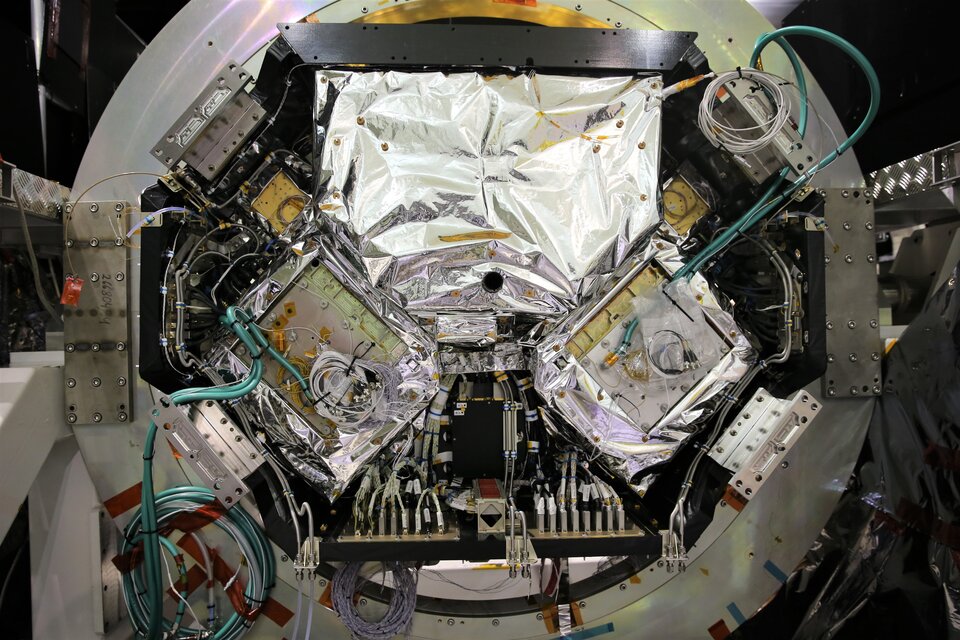
The laser was actually a complex system of laser sources and amplifiers, which are all packaged closely together. There were two small lasers to fix the frequency of the emitted pulses, a laser oscillator to generate pulses, two amplifier stages to boost the energy of the light pulses to the required value, and a frequency conversion crystals stage to produce the correct wavelength.
Aladin was dominated by a large telescope, which measured 1.5 m across. It was used to collect the backscattered light from the atmosphere and then direct it to the receiver. Although large, it was made of lightweight ceramic material so it weighed only 55 kg.
The telescope was pointed 35° away from the orbit plane in order to transmit and receive light perpendicular to the speed of the satellite. This allowed Aladin to determine the east-west horizontal component of the atmosphere.
The receiver analysed the Doppler shift of the backscattered signal with respect to the frequency of the transmitted laser pulse.
Remarkably over its life in orbit, Aladin beamed down over seven billion laser pulses.

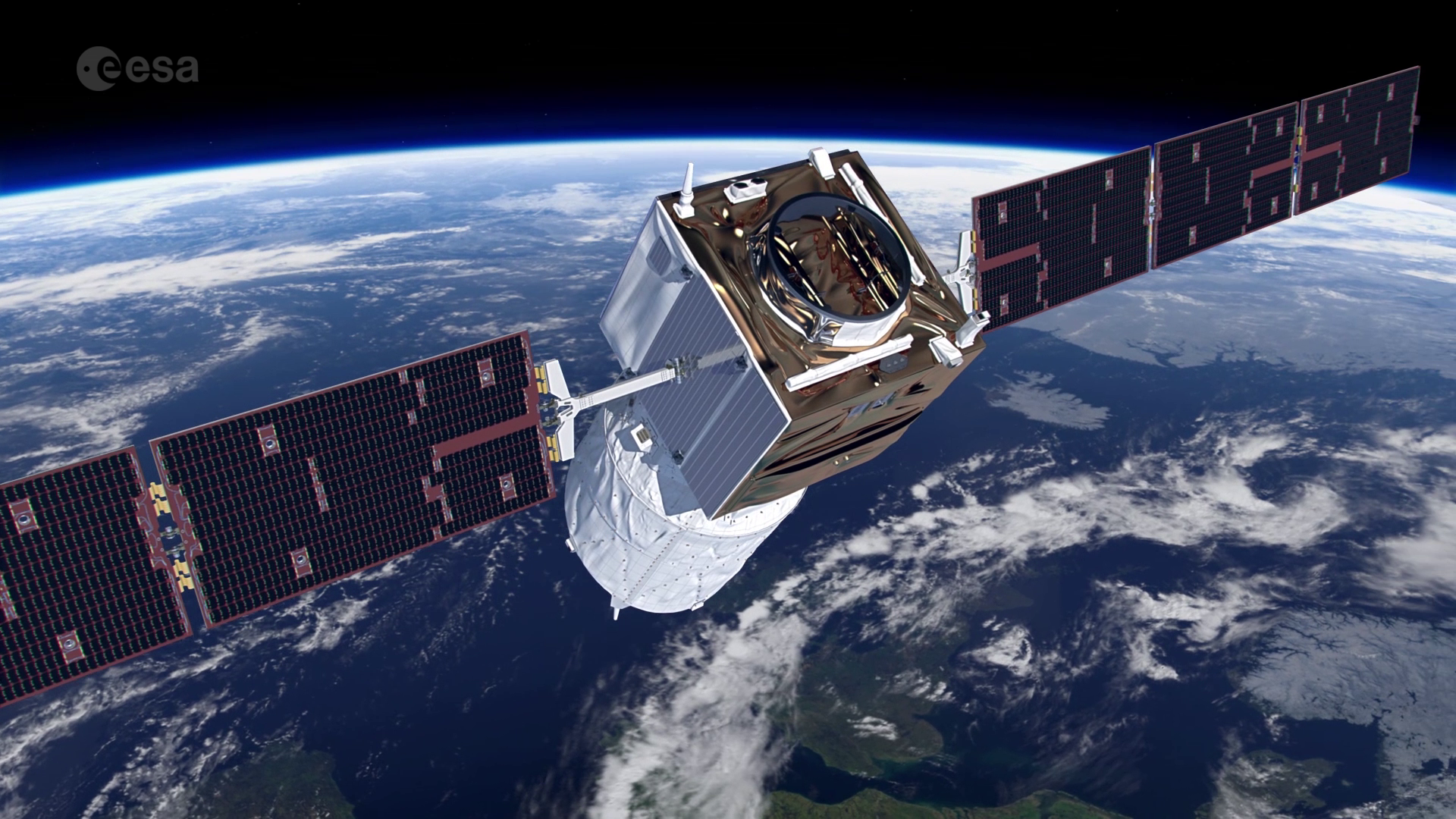
Access the video
Two optical analysers measured the Doppler shift of the molecular scattering, ‘Rayleigh’, and scattering from aerosols and water droplets, ‘Mie’.
Highly sensitive photo-detectors then transform the light signals into electronic signals. The wind profiles were accumulated over at least 20 individual measurements before being downlinked to Earth for further averaging.
Back to Aeolus homepage |














 Germany
Germany
 Austria
Austria
 Belgium
Belgium
 Denmark
Denmark
 Spain
Spain
 Estonia
Estonia
 Finland
Finland
 France
France
 Greece
Greece
 Hungary
Hungary
 Ireland
Ireland
 Italy
Italy
 Luxembourg
Luxembourg
 Norway
Norway
 The Netherlands
The Netherlands
 Poland
Poland
 Portugal
Portugal
 Czechia
Czechia
 Romania
Romania
 United Kingdom
United Kingdom
 Slovenia
Slovenia
 Sweden
Sweden
 Switzerland
Switzerland

























